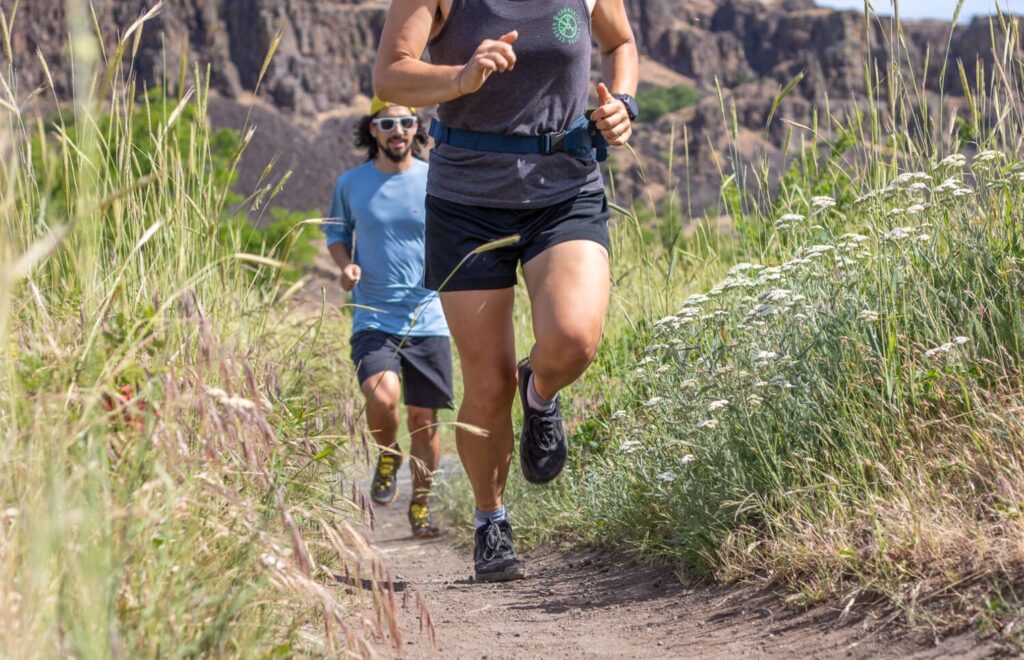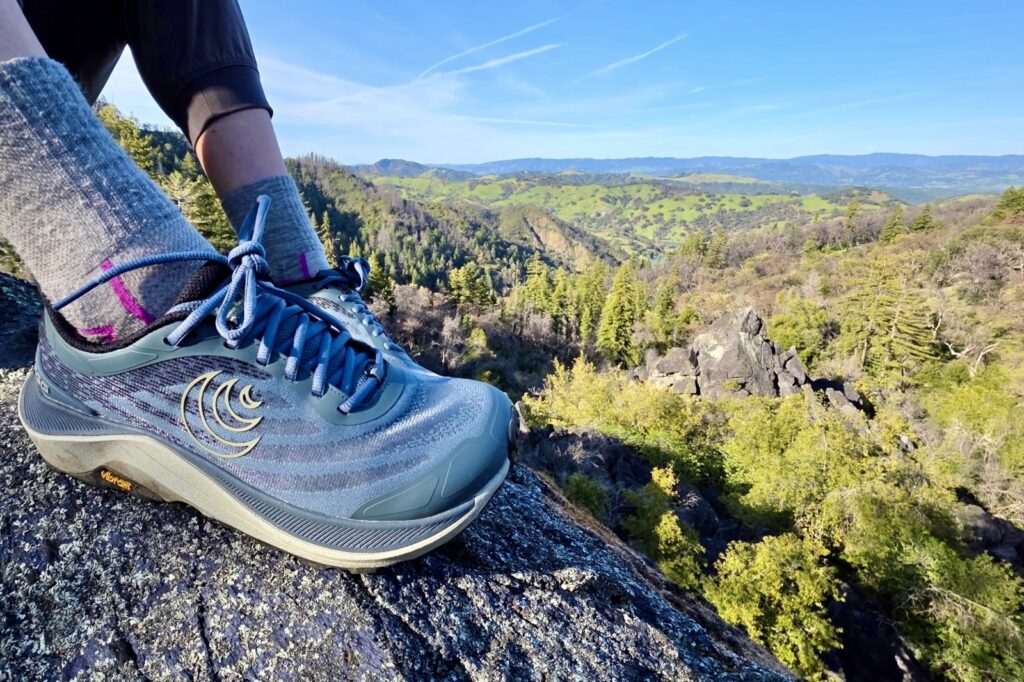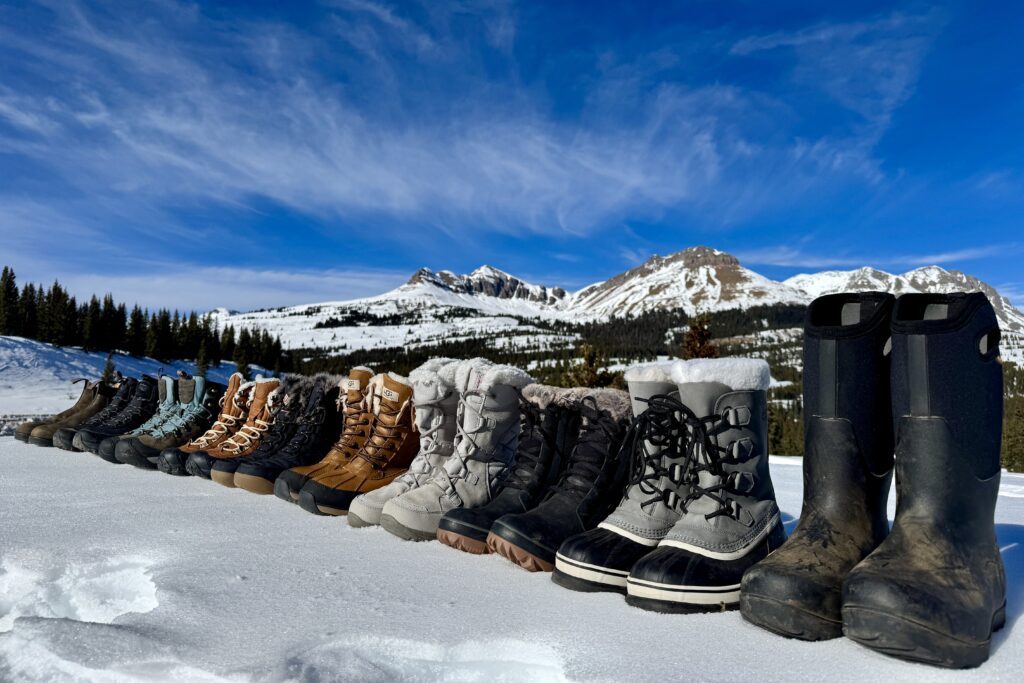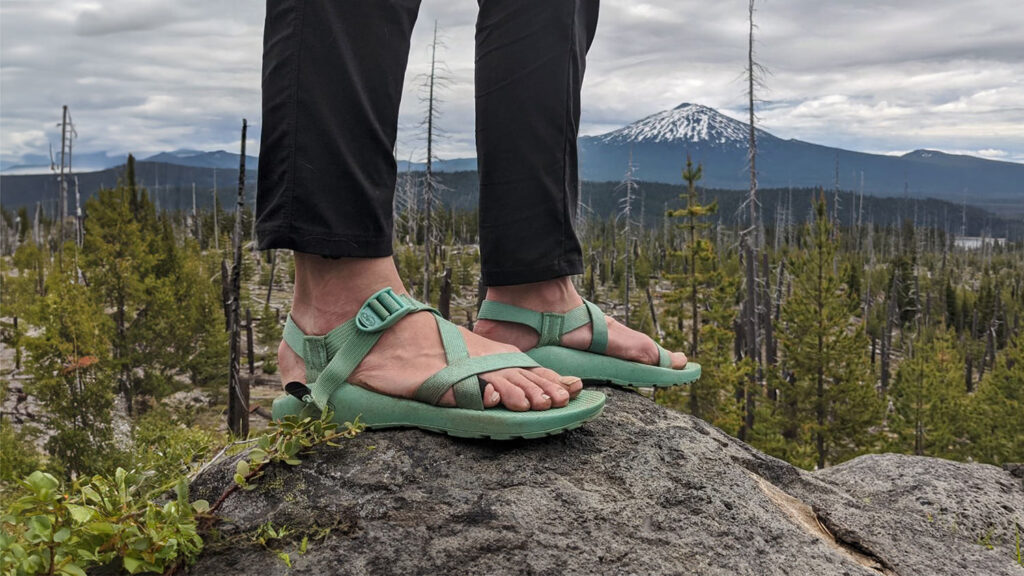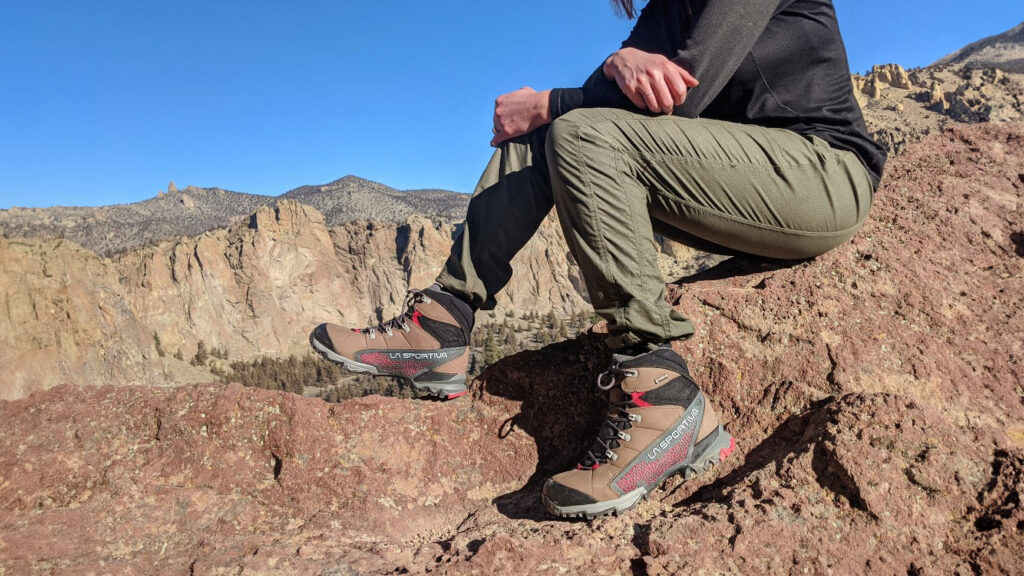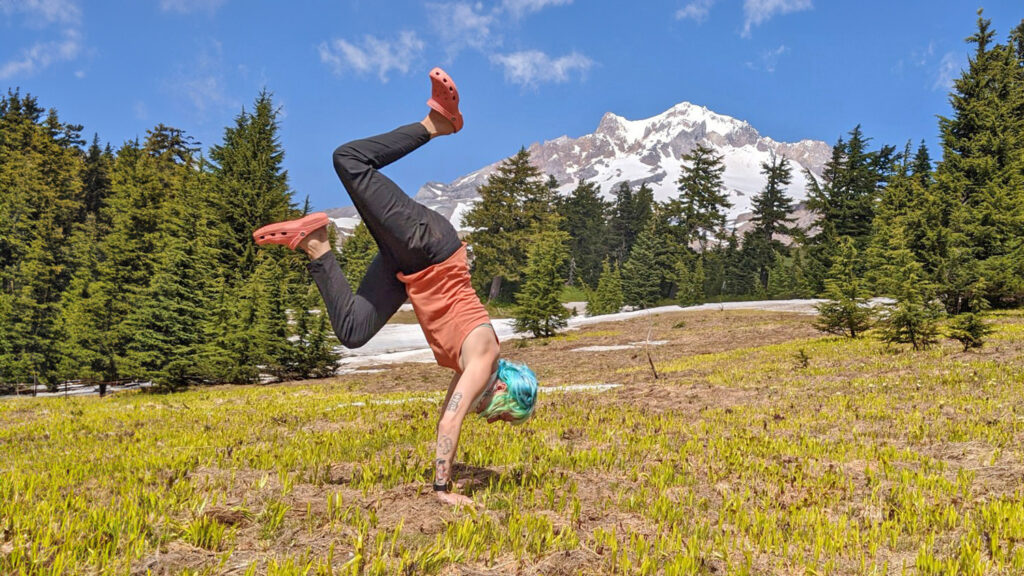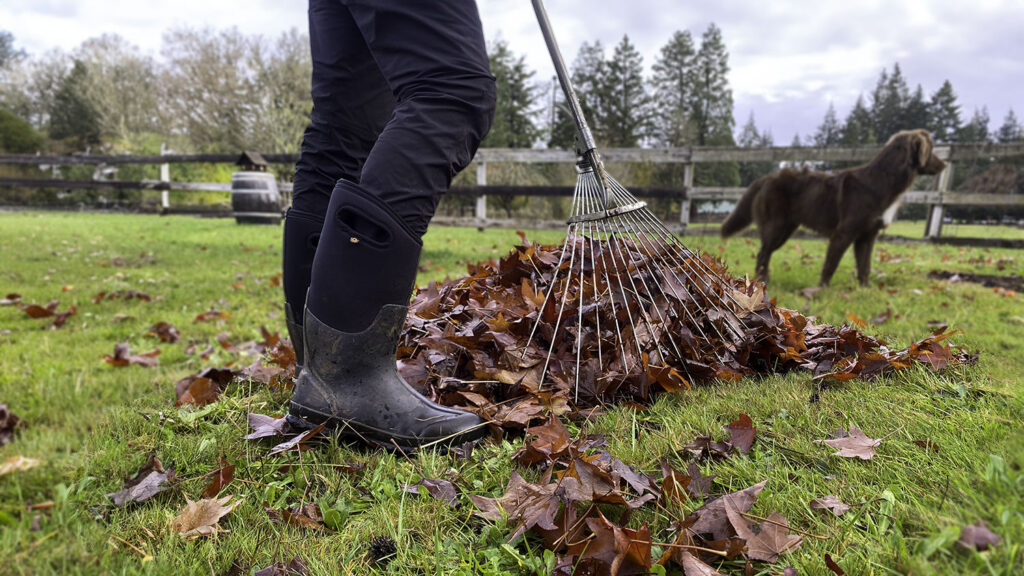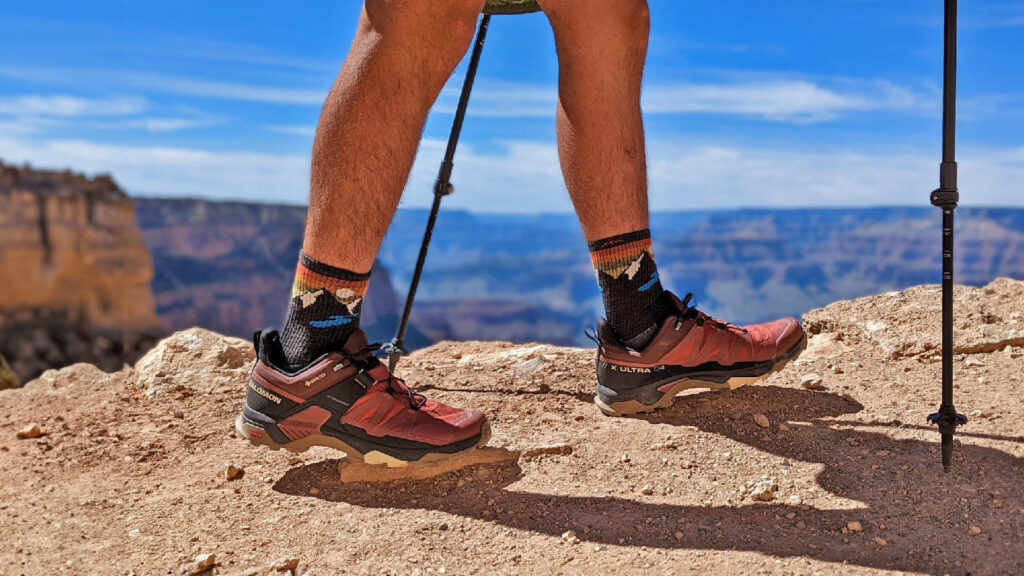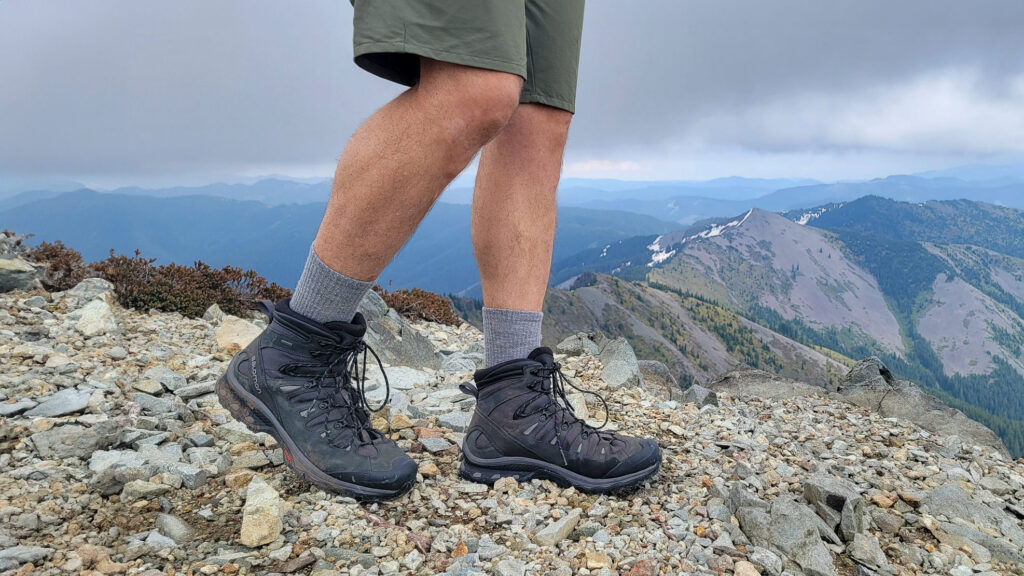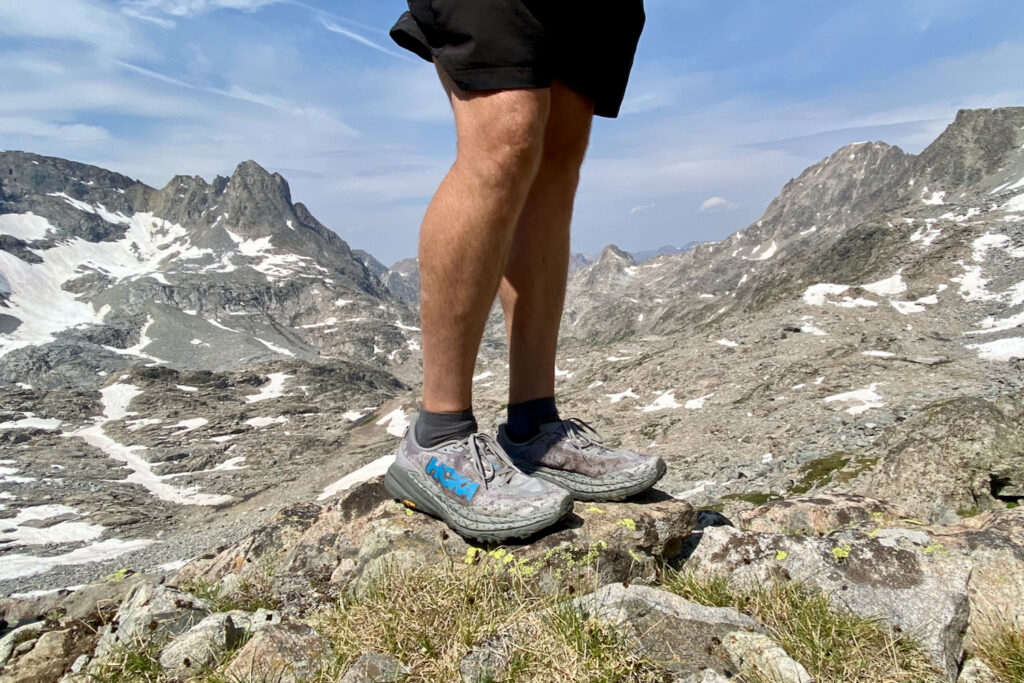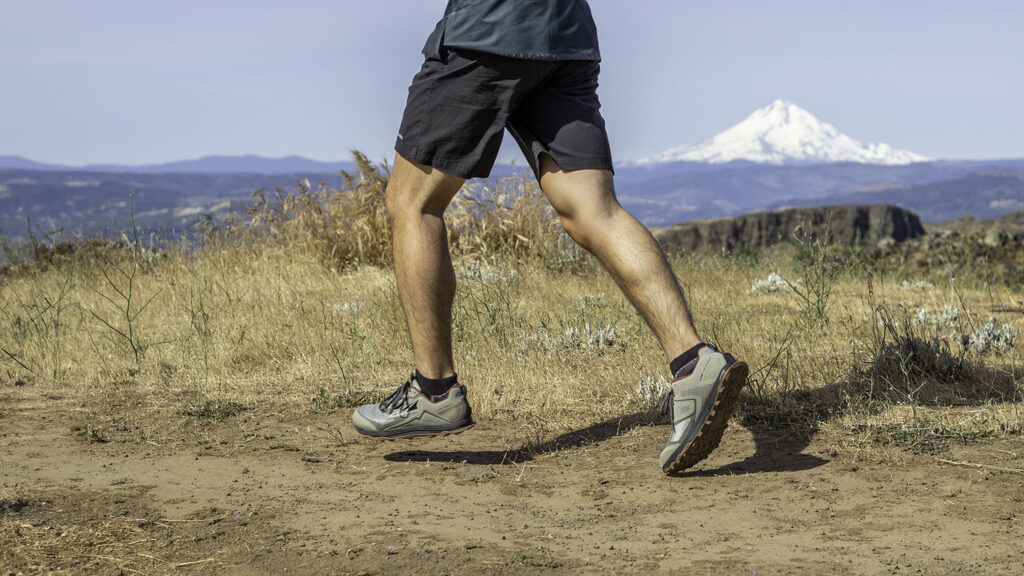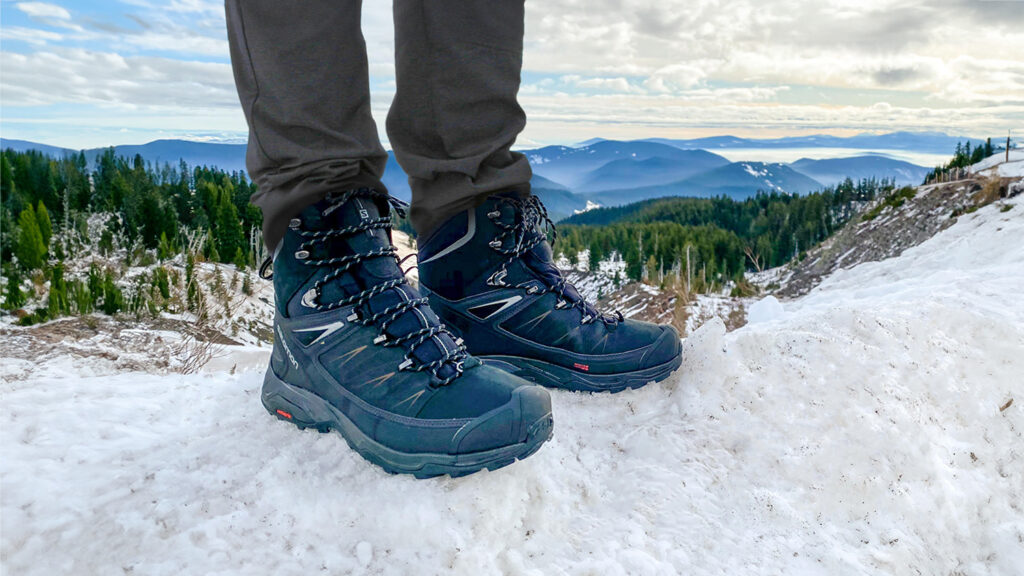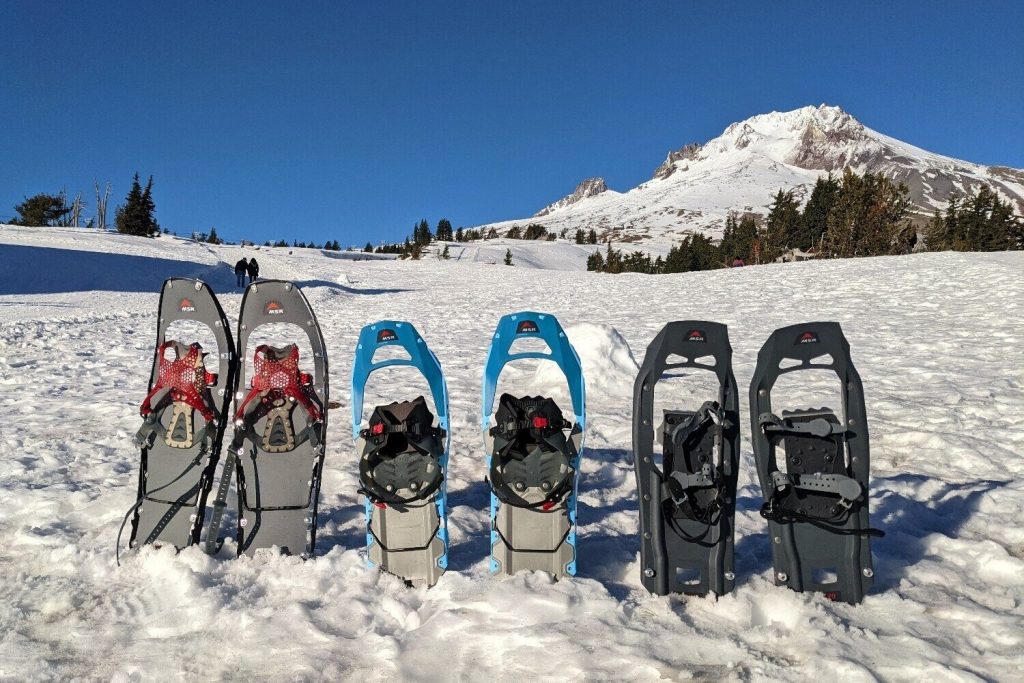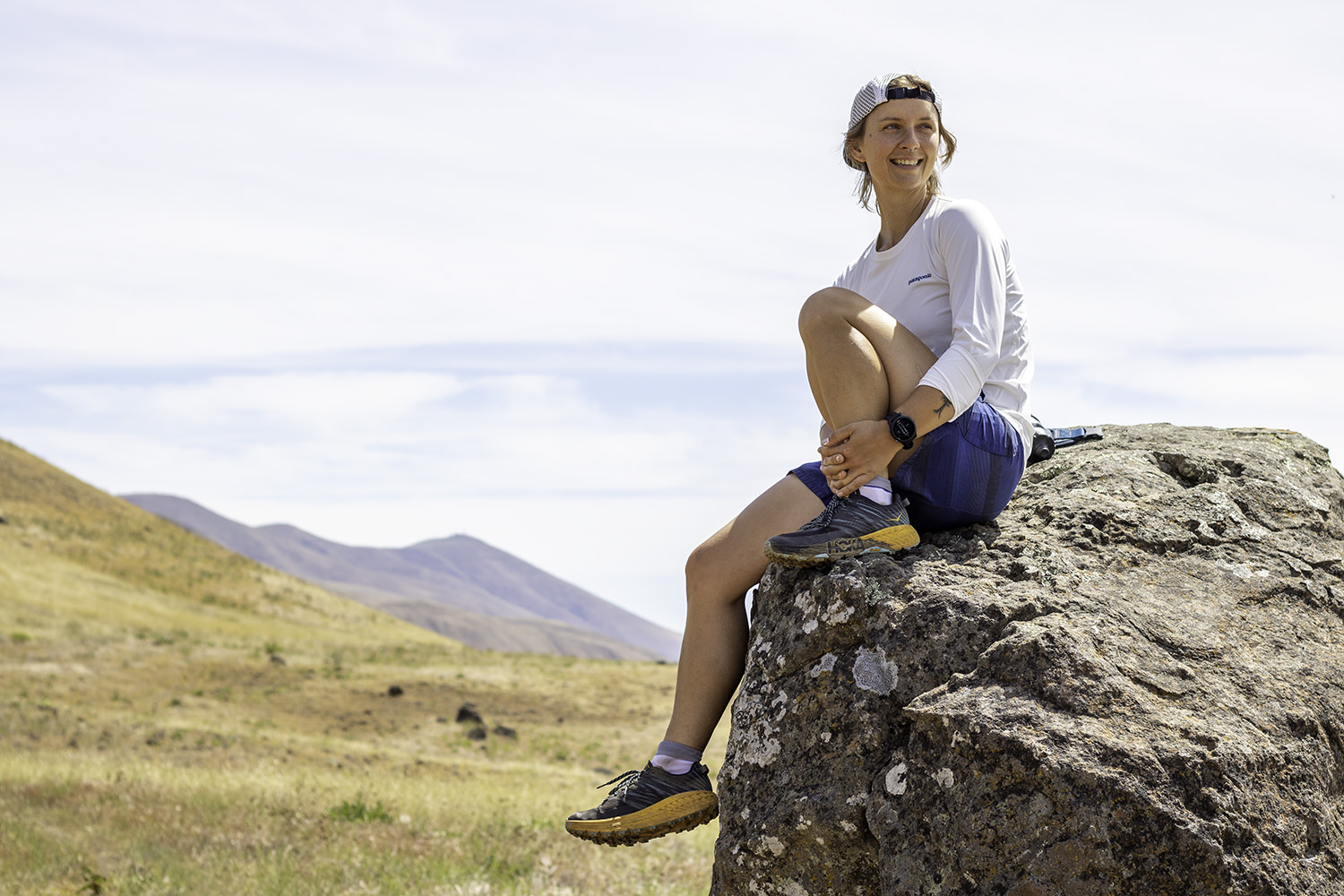
Whether you’re a dedicated trail running fanatic or a road runner looking to swap pavement for dirt, a good pair of running shoes will make all the difference. Your trail runners will need to keep you moving confidently over all kinds of terrain, so it’s important to find a pair that’s suited to your particular needs.
From running on technical trails to groomed singletrack, our team of experts has put up hard miles in 10 pairs of the top trail runners on the market. We tested models from brands like Saucony, HOKA, La Sportiva, Brooks, and more for traction, cushioning, and durability of each pair to bring you this list of best trail running shoes for any budget.
Just getting into the sport or looking to make a few upgrades? We can help you get outfitted with the best running vest, GPS watch, and socks to help you hit run club in style, complete your next race, or grab that PR you’ve been chasing.
Quick Picks for Women’s Trail Runners
Check out this quick list of our favorite women’s trail running shoes if you’re in a hurry, or continue scrolling to see our full list with in-depth reviews.
Best Trail Running Shoes Overall: Saucony Peregrine 14 ($140)
Best Budget Trail Running Shoes: Brooks Cascadia 18 ($140)
Best Traction for Technical Terrain: La Sportiva Bushido III ($145)
Best Trail Running Shoes for Road to Trail Training: Nike Pegasus 5 ($150)
Trail Running Shoes for Wide Feet HOKA Speedgoat 6 ($155)
Highly Cushioned Trail Running Shoes for Daily Training: New Balance Fresh Foam Hierro X 8 ($150)
Waterproof Running Shoes: Topo Terraventure 4 Waterproof ($150)
Best Zero-Drop Trail Running Shoes: Altra Lone Peak 8 ($140)
Best Trail Running Shoes for Race Day: Brooks Catamount 4 ($170)
Trail Running Shoes for Light Trails: Nike Zegama 2 ($180)
Trail Running Shoes for Gravel Trail: New Balance Fresh Foam x Trail More V3 ($160)
What’s new
We’ve made some major updates to our best trail runners list. Some shoes have made big moves up the list, and we’ve put some new models to the test. Here are the most notable changes:
- The Saucony Peregrine 14 has nabbed the top spot as our best overall trail running shoe.
- We’ve added offerings from Nike, New Balance, and Topo with the Nike Pegasus 5 ranking as our top pick for road to trail running.
- The New Balance Fresh Foam Hierro X 8 is our top rated choice among highly cushioned options for daily running.
- The Topo Terraventure 4 Waterproof garnered praise for keeping your feet dry on rainy runs.
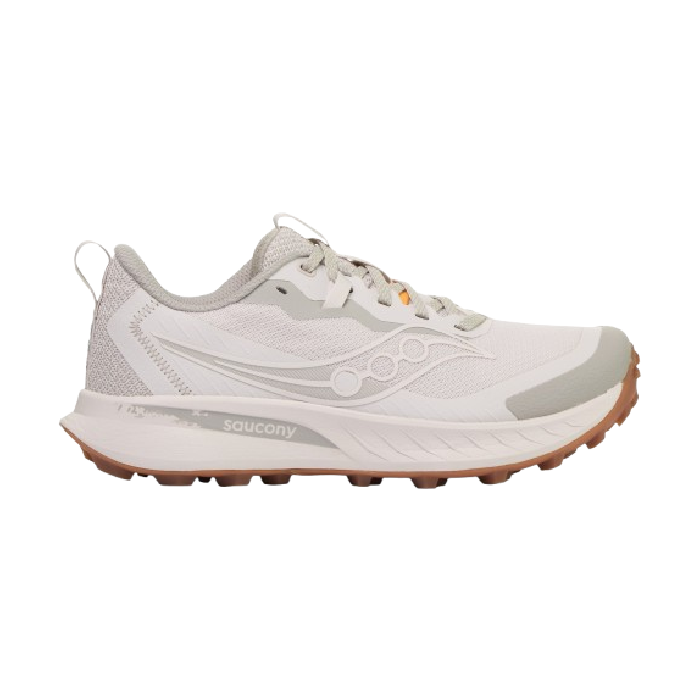
Women’s Saucony Peregrine 15
Best Women’s Trail Running Shoes Overall
CleverHiker Rating: 4.7/5.0
Price: $140
Weight (Pair): 1 lb. 1.2 oz.Women’s Size 8.5
Heel-to-Toe Drop: 4 mm
Cushioning: Moderate
Best For: Mixed Terrain
Pros
- Slipper-like comfort
- Highly breathable
- Great traction
Cons
- Not as durable for rugged terrain
We’ve been running in the Saucony Peregrines for many years now, and we love them for their exceptional comfort and aggressive traction. Whether it’s a rocky mountain route, a muddy forest trail, or a groomed trail in our favorite local park, the Peregrines bite into the terrain and provide a confident ride.
In our testing of the updated 15, we found them to handle like a dream on a wide variety of terrain from slippery, leaf-covered trails to muddy singletrack. The mesh uppers have a nice amount of give, keeping our feet comfortable, even after long hours.
If you’ve been a longtime fan of the Peregrines like we have, you’ll be happy to know that the well-padded tongue with a gusseted design does an excellent job of preventing debris from entering through the top of the shoe.
The mesh upper is woven tightly for a good blend of durability and breathability, and several reinforced areas add to the longevity of this shoe. The fit of the sock liner is on the narrow side, but wide sizes are available if you need more wiggle room.
We recommend this shoe for those who frequently run on tricky terrain and require unwaveringly reliable traction. This versatile trail shoe comes at a great price and will keep going for hundreds of miles.

Women’s Brooks Cascadia 18
Best Budget Trail Running Shoes for Women
CleverHiker Rating: 4.4/5.0
Price: $140
Weight (Pair): 1 lb. 8 oz.Women’s Size 12 Wide
Heel-to-Toe Drop: 8 mm
Cushioning: Moderate
Best For: Rugged terrain
Pros
- Comfortable cushion
- Responsive
- Roomy toe box
- Durable upper
- Available in wide widths
Cons
- Firm feeling foam
- Slightly heavier than average
The Brooks Cascadia 18s are well-rounded trail runners that appeal to a broad audience – from marathoners to hikers to casual runners. Their comfy, moderate cushioning, stable build, and exceptional durability at a budget-friendly price point make them stand out from other all-rounders.
The Cascadias excel on runs where having a ton of support is key, such as traversing rocky ridges and navigating root-laden forest trails. The upper has a structured design which, when combined with the wide base of the outsole, helps keep your foot in a neutral position while navigating tricky obstacles.
The Cascadias are heavier than many others, but – as is often the case with heavier gear – they’re more durable than most of the lightweight trail runners on the market. The tightly woven mesh of the upper contributes to the durability, but it also makes these shoes feel a bit stuffy in warm conditions.
Minor gripes aside, the Cascadias are well-balanced running shoes that can take on just about any type of trail. These shoes are a great choice for casual runners and those on a budget since their versatility makes them such a good value.
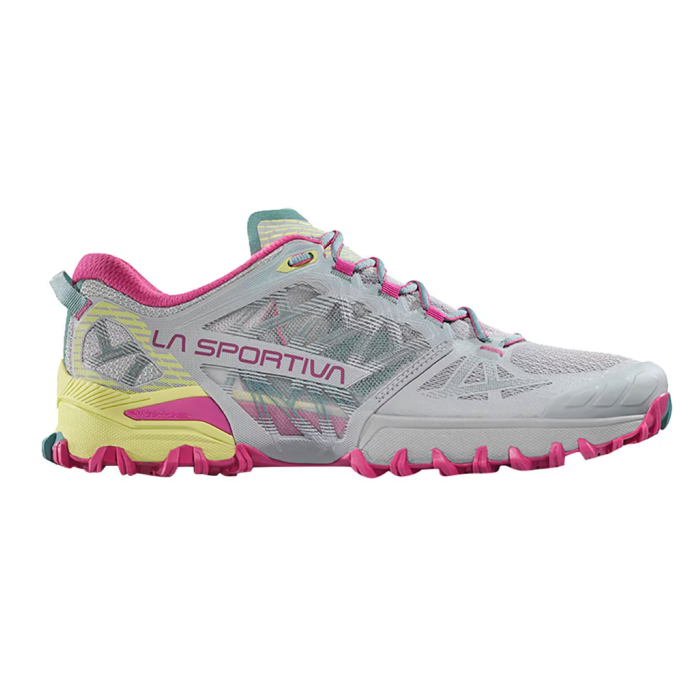
Women’s La Sportiva Bushido III
Best Traction for Technical Terrain
CleverHiker Rating: 4.4/5.0
Price: $145
Weight (Pair): 1 lb. 6 oz.Women’s Size 12 Wide
Heel-to-Toe Drop: 6 mm
Cushioning: Moderate
Best For: Technical terrain
Pros
- Exceptional traction
- Highly breathable upper
- Available in wide widths
Cons
- Stiff
- Minimal cushion
- Narrower fit
The La Sportiva Bushido IIIs are highly capable shoes with awesome traction for tackling technical terrain. These shoes excel on off-camber routes and challenging mountain trails where stability is key.
One of the Bushido’s greatest assets is its durability – the mesh zones are reinforced with a ripstop overlay, and they feature a stout rubber toe cap to protect against rocks. The soles and the lugs on the Bushidos are a bit stiff, so they’re not ideal for runners who prefer a cushioned ride. But this design means that the lugs won’t wear down as quickly as those made with soft rubber on the outsole.
The Bushidos’ durability and stability are even more impressive when you consider their weight. These shoes are incredibly light for how protective and durable they are, which helps keep you moving fast through the mountains.
This newest iteration of the Bushidos features several improvements over the previous generation, including availability in wide sizes. The standard model is a bit narrow, so this will be a welcome upgrade for runners who need more wiggle room. However, the wides don’t offer as much space as most wide models. Other updates include a redesigned rubber compound on the outsole, a new tread pattern with enhanced traction on uphill routes, and a slightly more breathable upper.
Runners seeking a lightweight shoe that doesn’t compromise on traction or support for handling technical terrain at speed will find the Bushidos to be a good match. They’re a bit stiffer than others, so we recommend them for shorter runs. Those wanting something softer with similar capabilities will likely prefer the Brooks Cascadias.
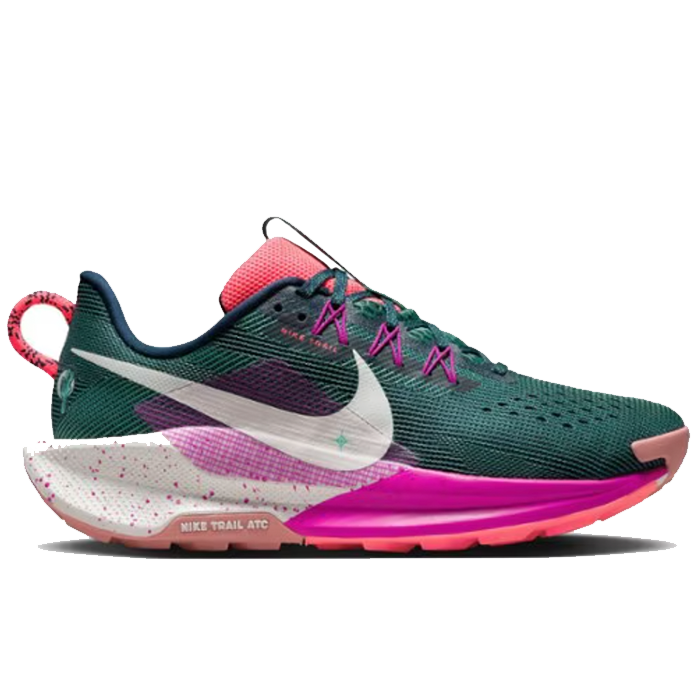
Women’s Nike Pegasus Trail 5
Best Trail Running Shoes for Road to Trail Training
CleverHiker Rating: 4.4/5.0
Price: $140
Weight (Pair): 1 lb. 6 oz.Women’s Size 12 Wide
Heel-to-Toe Drop: 9.5 mm
Cushioning: Maximum
Best For: Road to Trail
Pros
- Comfortable cushion
- Responsive
- Supportive
- Breathable
- Versatile
Cons
- Less traction in wet conditions
- Less space for toe splay
- Mesh may not be as durable on more rugged terrain
One of our favorite shoes, the Nike Pegasus 5, is an excellent choice for trail runners who incorporate a variety of terrains—roads, gravel paths, and singletrack—into their training. This remarkably versatile shoe is designed to transition seamlessly from road to trail and back again. It truly delivers—offering ample cushioning for a comfortable feel on harder surfaces while also offering an adequately lugged sole that provides a solid grip on rougher trails.
In our testing, we took the Pegasus across a range of environments. While it performed admirably in every setting, it truly excels on less technical terrain. We found ourselves reaching for it, again and again, no matter where we were headed, except for the most rugged or sloppy runs where the lugs could benefit from a bit more grip in slick mud.
Nike has engineered an incredibly lightweight and breathable upper that is reinforced to withstand everything except excessive abrasion without compromising airflow. Our feet felt comfortable during intense sessions, although we would have enjoyed having just a bit more room for toe splay.
Despite a couple of minor issues, the Pegasus 5 offers great value for those seeking a reliable, all-around shoe that they can take nearly anywhere they run.
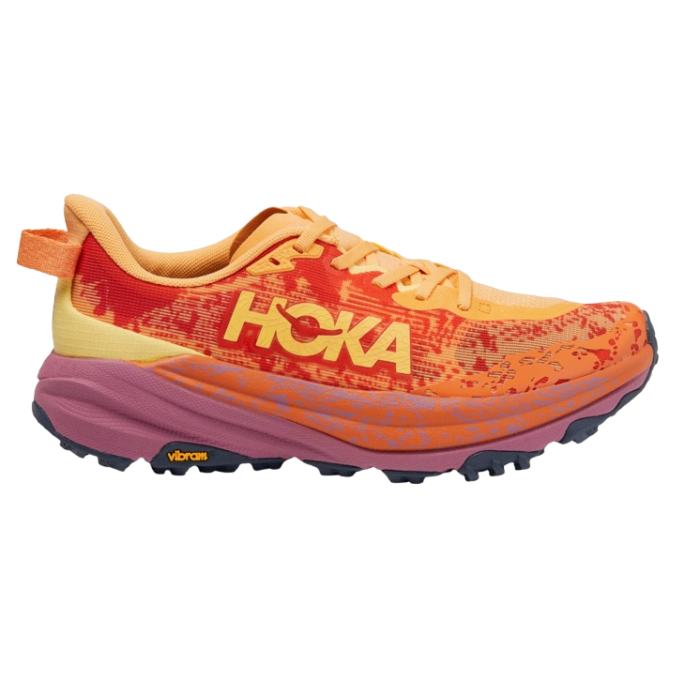
Women’s HOKA Speedgoat 6
Best Trail Running Shoes for Wide Feet
CleverHiker Rating: 4.2/5.0
Price: $155
Weight (Pair): 1 lb. Women’s Size 12 Wide
Heel-to-Toe Drop: 5 mm
Cushioning: Balanced
Best For: Trail Running, Hiking
Pros
- Aggressive tread
- Balanced cushion
- Wide sizes available
- Durable
Cons
- High volume fit will swim on some wearers
- Ankle cuff chafes ankle bones
- Feels stiff
- Lacks ground feel
The HOKA Speedgoat 6s are the latest in this series of high performance, maximum cushioning trail running shoes. Popular among a wide variety of trail enthusiasts, we had significant issues with fit. However, if you can dial that in, these will become your go-to shoe, especially for those with wider feet.
The ample cushioning makes the Speedgoats highly effective at protecting your feet on rocky terrain, reducing stress on your joints on hard-packed surfaces, and maintaining support over long distances. This is why many long-distance backpackers use these as hiking shoes as well. We recently took the Speedgoats on a multi-day backpacking trip on Michigan’s North Country Trail, and our feet were still feeling fresh by the end of long days thanks to the cushy midsoles.
While the plush midsole makes the Speedgoats a common pick among ultrarunners who need all-day comfort, those who keep weekly mileage lower still have plenty to gain by choosing these shoes. The Vibram Megagrip outsole features deep, sticky lugs that excel on everything from loose dirt to granite slab. This versatile traction compound allows you to tackle a wide array of different trails with just this one pair of shoes.
Of course no shoe is a one-size-fits-all, and the Speedgoats won’t be everyone’s cup of tea. The thick midsole means you lose out on a fair bit of ground feel, and runners who aren’t used to the stack height (31 millimeters at the heel) may find these shoes somewhat unstable on rocky or off-camber routes.
Additionally, we found the Speedgoats to be much too high volume and exceptionally wide. Our feet were swimming and sliding, but for those who struggle to find enough space in their athletic shoes, these might be just the ticket. Our biggest complaint was the fit of the higher than average ankle cuff, which chafed us relentlessly despite various sock pairings.
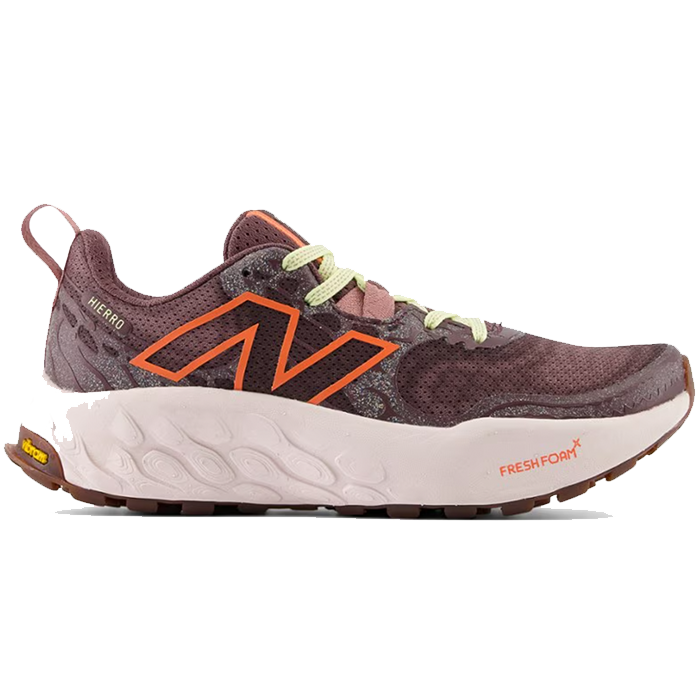
Women’s New Balance Fresh Foam Hierro X 8
Highly Cushioned Trail Running Shoes for Daily Training
CleverHiker Rating: 4.1/5.0
Price: $150
Weight (Pair): 1 lb. 6 oz.Women’s Size 12 Wide
Heel-to-Toe Drop: 6 mm
Cushioning: Maximum
Best For: Rugged Trail
Pros
- Comfortable cushion
- Wider toe box
- Versatile
- Wide widths available
Cons
- Less traction in mud
- Slow to dry
If you’re searching for a versatile trainer with maximum cushioning and a moderate heel-to-toe drop, check out New Balance’s Fresh Foam Hierro X 8. Perfect for dry conditions and well-groomed trails it offers fantastic value for those looking for the intersection of versatile performance and cushy comfort. The Hierro X 8 features innovative Vibram-coated micro-lugs that are extraordinarily sticky, securely gripping every surface we took them on. Their lack of depth is only a drawback on very steep, muddy trails where you need something that really digs in. If your go-to routes aren’t too technical, the Hierro is a top performer.
While they are available in three widths the toe box in the wide may not be as roomy as some other brands. Those looking for max cushion and max width with better lugs will be better served by the Hoka Speedgoat 6.
In our testing, we found these shoes to be springy and responsive without completely erasing ground feel. Despite the plush midsole, we felt seriously supported and never like we were on stilts. Additionally, the highly breathable upper ensured our feet stayed cool and comfortable no matter the temperature. Long days were no match for the Hierro and our feet felt fresh no matter how many miles we logged.
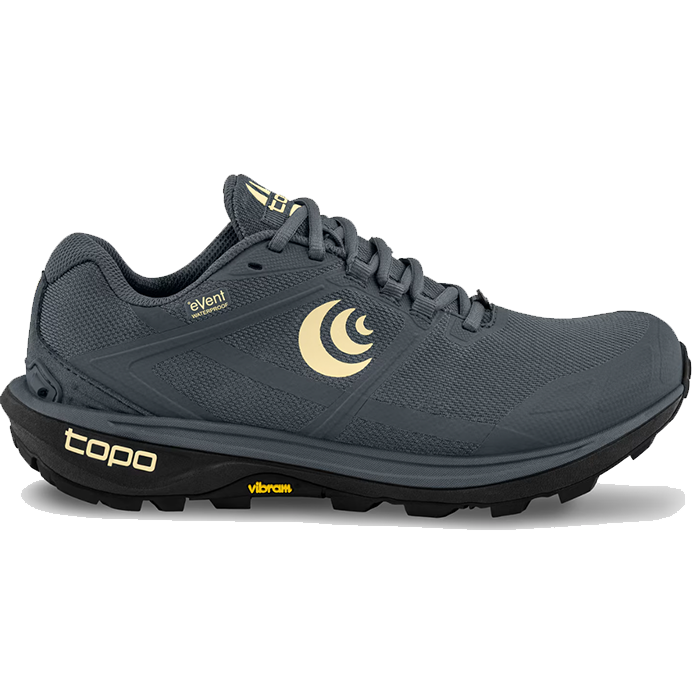
Women’s Topo Terraventure 4 Waterproof
Best Waterproof Running Shoes
CleverHiker Rating: 3.9/5.0
Price: $150
Weight (Pair): 1 lb. 10 oz.Women’s Size 12 Wide
Heel-to-Toe Drop: 3 mm
Cushioning: Moderate
Best For: Trail
Pros
- Roomy toe box
- Waterproof
- Excellent traction
Cons
- Less breathable
- Slow to dry
The Topo Terraventure has been our go-to trail shoe for several years now. It has an affordable price point, excellent traction, and grippy outsole. With a die-hard upper that still breathes well, it is this ‘tough-on-shoes’, high-mileage runner’s dream shoe.
The Terraventure 4 Waterproof takes that ruggedness to the next level by including air permeable eVent waterproofing in the upper. This effectively blocks exterior moisture while still allowing for breathability. However, as with nearly anything labeled waterproof and breathable, there are trade-offs.
Moisture can move outward through the eVEnt, but it’s a slow process. Once the shoes get wet inside—whether from being out all day, splashing through standing water, or funneled there by overhanging vegetation—these shoes will dry much more slowly than non-waterproof versions.
By nature, due to the additional thickness and reduced airflow of waterproof shoes not only is moisture slower to escape, but so is heat. Therefore, waterproof is warmer. This is a boon in cold weather and we love these shoes for cold, rainy winter runs in the Pacific Northwest and snowy romps in the foothills. But, in warmer conditions, the combo of heat and moisture build-up may be too much for some.
We’re thrilled that the overall design remains the same, with an anatomical toe box that accommodates toe splay and wider feet as well as a secure midfoot and heel. The flexible ESS rock plate and Vibram outsole continue to deliver amazing traction on rocks and mud. We did note that the uppers felt a bit stiff and constrictive at first in a way that the non-waterproof version doesn’t; however, after a few runs, we experienced a softening that alleviated any concerns.
While not necessarily the most versatile option for four season running if summers are hot and humid, the Terraventure 4 WP is a winner for those looking for a waterproof shoe that offers spaciousness and security with a minimal 3 mm drop and moderate cushioning.
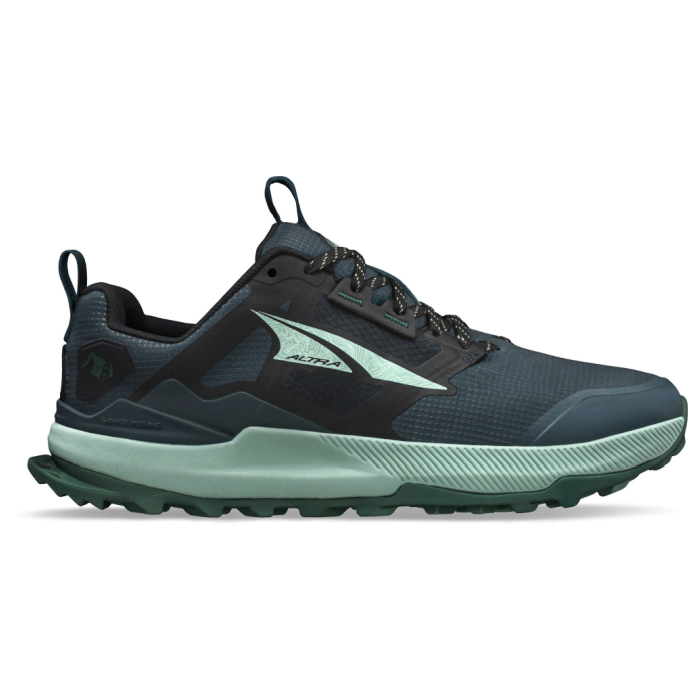
Women’s Altra Lone Peak 8
Best Zero-Drop Trail Running Shoes
CleverHiker Rating: 3.8/5.0
Price: $140
Weight (Pair): 1 lb. 2 oz.Women’s Size 12 Wide
Heel-to-Toe Drop: 0 mm
Cushioning: Moderate
Best For: Mixed
Pros
- Roomy toe box
- Soft cushion
- Wide sizes available
Cons
- Zero drop can be hard to adjust to
- Regular width will be too wide for some
- Lacked traction on wet surfaces
The Altra Lone Peak 8s are a favorite among long-distance runners due to their low weight, grippy outsole, and roomy fit. Altra’s signature Footshape toe box allows your toes to spread naturally which provides confidence and stability over tricky terrain.
We’ve used the Lone Peaks for mountain running for many years, and the 8th iteration doesn’t disappoint. This model keeps all of our favorite updates from the Lone Peak 7 – a more locked-in midfoot, an improved traction pattern with more lugs, and a seamless upper design – but it swaps out the Air Mesh material for a more durable Ripstop mesh upper. The result is a lightweight pair of shoes that punches well above its weight class in terms of longevity.
Moderate cushioning and a not-too-stiff, not-too-soft rockplate provide good ground feel and responsiveness without leaving your feet vulnerable to getting beaten up by rocks and roots. And we find that the proprietary Altra EGO Foam in the midsole doesn’t flatten out after long days on trail.
If you’re considering the Lone Peaks but you’ve never tried zero-drop shoes before, you should buy them well in advance of any serious distance runs you have planned. Zero-drop shoes aren’t for everyone, and they can be hard on the achilles for those who aren’t used to them. Going too hard too fast can result in painful tendon injuries, but give your body proper time to adjust and you may just find that the benefits of zero-drop are worth the effort. These shoes won’t force your foot out of your natural gait, they may help with balance since your heel and forefoot are at the same height, and they can strengthen the muscles in your feet and ankles.
Trail runners seeking a pair of shoes that strikes a good balance between sensitivity and foot protection may find the Lone Peaks to be a perfect match. If you’re a longtime zero-drop runner or you’ve been curious about trying this style of shoe, there’s no better model than the Lone Peaks.
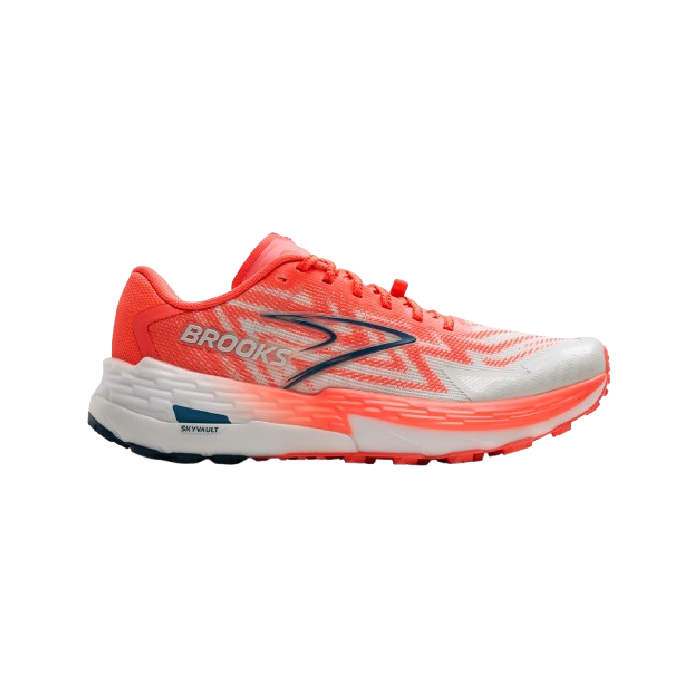
Women’s Brooks Catamount 4
Ultralight Trail Shoes for Runners Who Want to Go Fast
CleverHiker Rating: 3.8/5.0
Price: $170
Weight (Pair): 1 lb. 0.03 oz.Women’s Size 12 Wide
Heel-to-Toe Drop: 6 mm
Cushioning: Moderate
Best For: Mixed
Pros
- Built for speed
- Good energy return
- Well cushioned
- Lightweight
- Durable
Cons
- Less traction in wet conditions
- Narrow profile
- Low volume fit
- Doesn’t perform as well at slower speeds
Looking for a fast shoe for PR attempts and short races? The ultralight Brooks Catamount 4 may be the one. These are some of the lightest trail shoes on our list, and they’re built for speed.
They have a neutral design that’s meant to support the natural movement of your feet without guiding them into a particular stride. The snug fit, wide base of the outsole, and secure crinkle-cut laces deliver the perfect amount of stability for runners who don’t need a ton of support for correcting overpronation or supination.
The Catamounts feature adaptive cushioning and propulsion plates that provide a responsive ride, so you’ll get out of these shoes what you put in. In plain terms, the midsoles feel a lot softer when moving at speed and the energy return from the SkyVault plates propel you forward on ascents and flat trail while also keeping your feet protected from roots and rocks.
While these details are enticing for runners chasing course records on Strava, those who prefer to move at a casual pace won’t reap all the benefits of the Catamount build. The cushioning feels noticeably firmer at slower speeds, so runners falling in the latter category should consider the HOKA Speedgoats or the Topo Ultraventures for a lightweight shoe that feels plush underfoot at any pace.
Overall the Catamounts are a great choice for race day and for runners who are training at speed. These light and breathable shoes are built to last and will take you from base to peak in a flash.
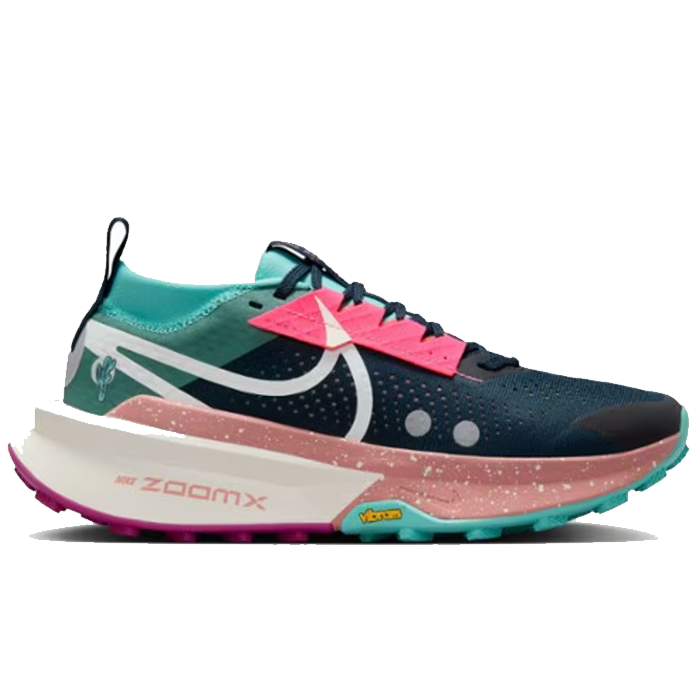
Women’s Nike Zegama 2
Best Trail Running Shoes for Light Trails
CleverHiker Rating: 3.5/5.0
Price: $180
Weight (Pair): 1 lb. 5 oz.Women’s Size 12 Wide
Heel-to-Toe Drop: 4 mm
Cushioning: Maximum
Best For: Trail Running and Trail Racing
Pros
- Comfortable cushion
- Wider toe box
- Built-in ankle gaiter
- Versatile
Cons
- Less traction in wet conditions
- Laces run short
- Expensive
The Nike Zegama 2 is a great shoe for trail runners seeking a comfortable experience on more compact, well-groomed trails. With a focus on comfort, the Zegama 2 delivers a surprising level of responsiveness despite its maximal cushioning. However, there is a trade-off—minimal ground feel—making them less suited for technical terrain. However, unlike many heavily cushioned trail running shoes, these feature a modest 4 mm drop coupled with significant midfoot support. We appreciate these shoes’ energy return, especially when we hit our stride on compact trails.
Even though they are a tad heavier than the competition, we were impressed by how the Zegama 2 floated on loose, sandy trails in central Michigan. They also accommodate higher volume feet and give plenty of space for toe splay and foot swell on longer runs. If the Nike Pegasus 5 is a bit too narrow for you, you may find the Zegama to be just right.
Our favorite feature was the integrated ankle gaiter that effectively kept debris, including sand, at bay. We found it a comfortable addition that we didn’t even notice once we’d laced up. Although the laces run a bit short that was only a minor annoyance.
Combining max cushion with a roomy toe box and a snug midfoot, the Zegama 2 proves to be a solid option for all-day runs on compact surfaces and light trails alike.
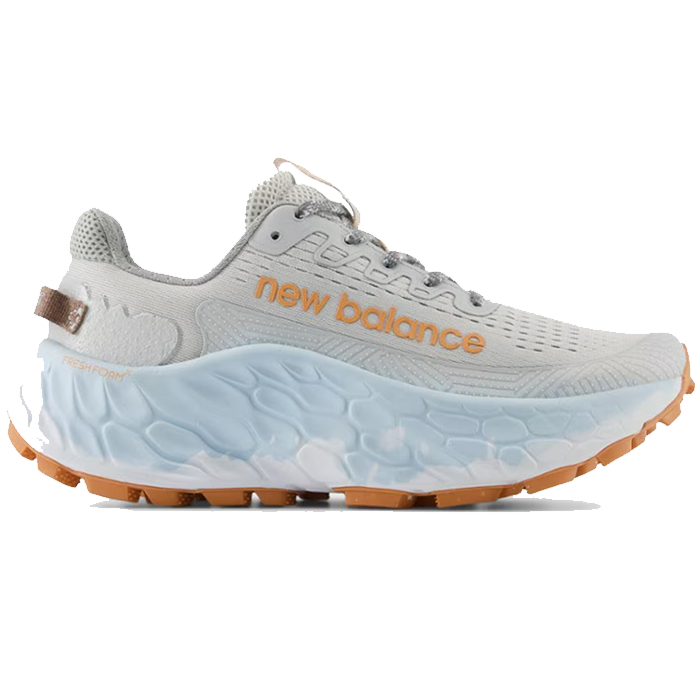
Women’s New Balance Fresh Foam x Trail More V3
Best Trail Running Shoes for Gravel Trail
CleverHiker Rating: 3.3/5.0
Price: $160
Weight (Pair): 1 lb. 1 oz.Women’s Size 12 Wide
Heel-to-Toe Drop: 4 mm
Cushioning: Maximum
Best For: Rugged Trail
Pros
- Plush cushion
- Wider toe box
- Good bounce
- Wide widths available
- Breathable
Cons
- Minimal traction on technical terrain
- Stack height is very high
- Channel in the midsole is less supportive
The New Balance Fresh Foam X Trail More V3 is a popular option among trail running shoes, so we had really high expectations. While most of those expectations were met, we found a few caveats that limit their versatility. However, these shoes offer luxurious cushioning, a minimal drop, and come in three different widths. They are also highly breathable and provide a generous amount of volume.
The minimal tread performed adequately on well-groomed terrain, but less so on muddy or technical trails. Runners who specialize in specific terrains—such as fire roads, gravel trails, and smooth, dry singletrack—may find them to be a solid option. If rugged or muddy trails are your go-to, you’ll want to look at the New Balance Hierro X 8 instead.
We appreciated these shoes’ energy return, especially when we hit our daily running route on a nearby gravel path. However, we noticed the stack height seemed a bit high, which affected our stability on uneven surfaces. Aside from quibbles with traction and stack height, we appreciated the excellent breathability and spaciousness in the toes, making them a comfortable choice for extended runs.
If your running primarily involves smooth trails, and you’re seeking both extra cushioning and a more spacious fit these shoes could be just what you’re looking for.
More: Women’s New Balance Fresh Foam X Trail More v3 Full Review
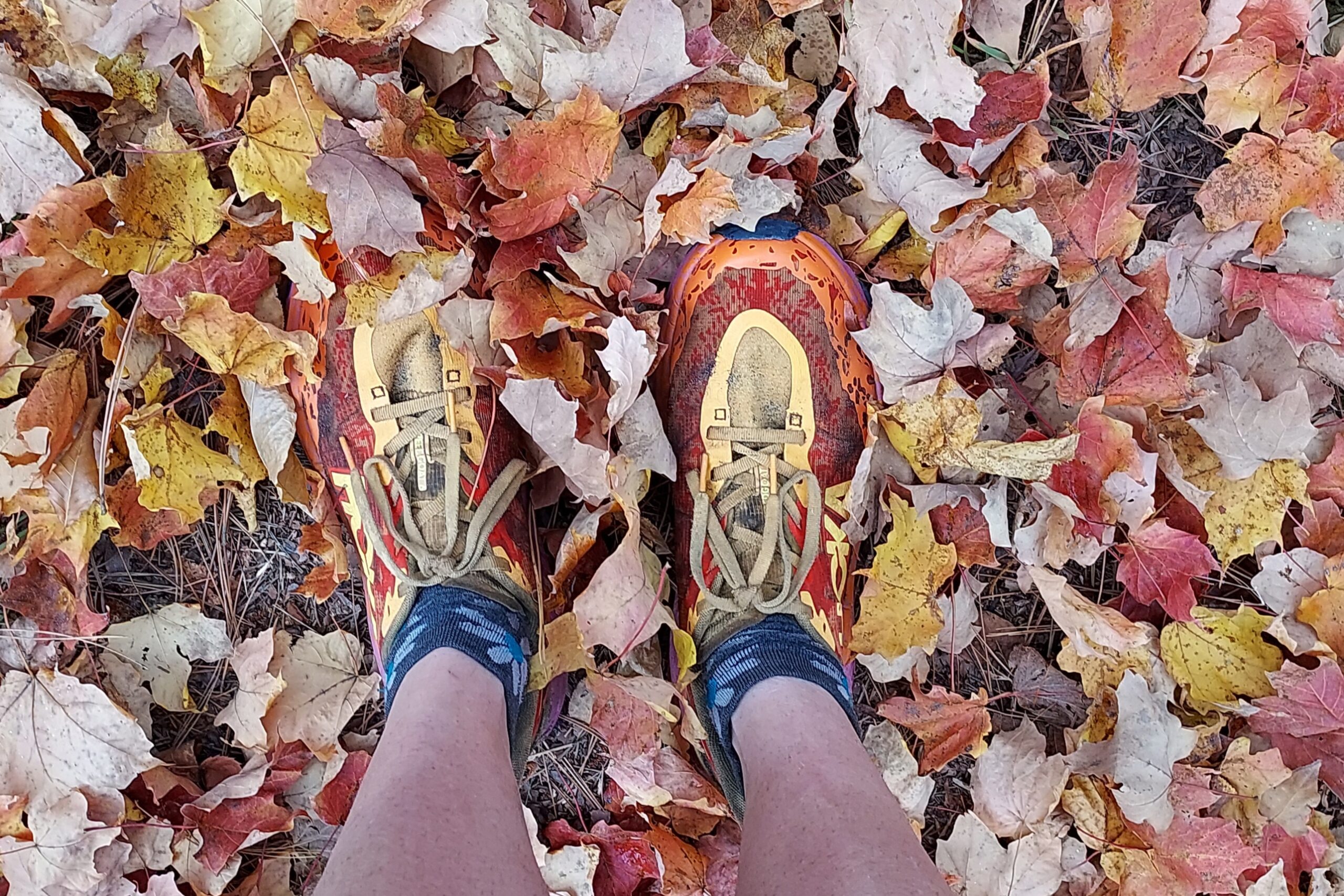
Product Comparison Table
| oSort | Product | Price | Weight (Pair) | Heel-to-Toe Drop | Cushioning | Best For | Traction | Comfort | Weight Score | Durability | Breathability | Responsiveness | 0 |
Saucony Peregrine 15 View at REI View at Amazon |
$140 | 1 lb. 1.2 oz. Women’s Size 8.5 | 4 mm | Moderate | Mixed Terrain | 4.5 | 5.0 | 4.8 | 4.0 | 5.0 | 4.8 | 1 |
Brooks Cascadia 18 View at REI View at Amazon |
$140 | 1 lb. 8 oz. Women’s Size 12 Wide | 8 mm | Moderate | Rugged terrain | 5.0 | 4.8 | 4.0 | 4.8 | 4.0 | 4.8 | 2 |
La Sportiva Bushido III View at REI View at Amazon |
$145 | 1 lb. 6 oz. Women’s Size 12 Wide | 6 mm | Moderate | Technical terrain | 5.0 | 4.0 | 4.0 | 4.0 | 4.8 | 4.5 | 3 |
Nike Pegasus Trail 5 View at REI View at Nike |
$140 | 1 lb. 6 oz. Women’s Size 12 Wide | 9.5 mm | Maximum | Road to Trail | 3.0 | 4.8 | 4.8 | 4.0 | 4.8 | 4.8 | 4 |
HOKA Speedgoat 6 View at REI View at Backcountry |
$155 | 1 lb. Women’s Size 12 Wide | 5 mm | Balanced | Trail Running, Hiking | 5.0 | 2.0 | 4.8 | 4.8 | 4.0 | 4.5 | 5 |
New Balance Fresh Foam Hierro X 8 View at REI View at Amazon |
$150 | 1 lb. 6 oz. Women’s Size 12 Wide | 6 mm | Maximum | Rugged Trail | 3.0 | 4.8 | 4.8 | 3.0 | 4.0 | 4.8 | 6 |
Topo Terraventure 4 Waterproof View at Amazon |
$150 | 1 lb. 10 oz. Women’s Size 12 Wide | 3 mm | Moderate | Trail | 4.8 | 4.0 | 4.5 | 5.0 | 1.0 | 4.0 | 7 |
Altra Lone Peak 8 View at REI View at Backcountry |
$140 | 1 lb. 2 oz. Women’s Size 12 Wide | 0 mm | Moderate | Mixed | 4.0 | 4.0 | 4.0 | 4.0 | 3.0 | 4.0 | 8 |
Brooks Catamount 4 View at REI View at Amazon |
$170 | 1 lb. 0.03 oz. Women’s Size 12 Wide | 6 mm | Moderate | Mixed | 2.0 | 3.5 | 4.8 | 4.0 | 3.8 | 4.8 | 9 |
Nike Zegama 2 View at Amazon View at Amazon |
$180 | 1 lb. 5 oz. Women’s Size 12 Wide | 4 mm | Maximum | Trail Running and Trail Racing | 3.0 | 4.0 | 3.0 | 3.0 | 4.0 | 4.0 | 10 |
New Balance Fresh Foam x Trail More V3 View at REI View at Amazon |
$160 | 1 lb. 1 oz. Women’s Size 12 Wide | 4 mm | Maximum | Rugged Trail | 2.0 | 3.0 | 3.0 | 3.0 | 4.6 | 4.0 |
|---|
How We Test & Methodology
We assessed each pair of shoes on the following six metrics: Traction, Comfort, Weight, Durability, Breathability, and Responsiveness. We ran a minimum of 10 times in each pair on a wide range of trails and in a variety of weather conditions. We tested them on warm, late summer days in the Midwest and in wet autumn weather in Washington state on trails ranging from gravel to sand, and from slick mud to steep, technical slopes.
TRACTION
The components of traction are two-fold—the outsole compound and the tread. We paid attention to how the outsole gripped surfaces like wet rocks or plank bridges as well as whether the lugs dug into the dirt and mud—especially on steep grades. We also paid attention to whether the lugs were a hindrance on smoother terrain and noted which models had more versatility by performing well in various conditions.
COMFORT
Comfort encompasses all different aspects of how the shoe fits the foot. We looked for pinch points as well as areas where fit was loose. We tested wide models as well as standard to determine accommodation for different foot shapes. We gained a solid sense of each shoe by running for varying lengths of time in different weather on disparate trail types to assess potential issues with chafing, blisters, lateral movement, or constriction.
WEATHER RESISTANCE
We look at weather resistance inside and out. Our assessment includes the rain, hail, and snow resistance of the fly, including both water penetration/dripping through the fly, as well as splashback from underneath the fly, and any sagging from saturation. In addition to precipitation, we consider the wind resistance which entails assessing the quality and stability of stakes; number and location of guypoints; and vestibule geometry. Lastly, we analyze interior condensation, paying attention to the number, size, and location of vent points, as well as, obviously, the amount of moisture on the underside of the fly when we wake up each morning.
WEIGHT
We looked at the listed weight for the shoes and weighed them independently. We also paid attention to how light the shoes felt—which ones kept us feeling fresh even on long days and the ones that had perceived weights that bogged us down.
DURABILITY
We know running shoes have a lifespan of a certain set of miles, but we still want to know which ones will have an external structure that keeps up with the internal. Having an upper that blows out before the midsole has begun to crush out is a huge disappointment! We examined the reinforcement overlays, welding, and construction of the uppers to identify resilience to fail points. We also paid attention to exposed foam on the soles to see if it was prone to punctures, tears, or excessive wear during trail use.
BREATHABILITY
Moisture and heat management are crucial to avoiding blisters and chafing. Finding shoes that are durable, but still allow for airflow can be a challenge. We ran in warm weather and moderate temps to see how well shoes shed heat. We also splashed our way through creeks and puddles to find out how long it took for each pair to fully dry.
RESPONSIVENESS
Gauging responsiveness includes assessing a shoe’s energy return and propulsion and its nimbleness on technical terrain. We also noted how much we felt the ground and whether it left our feet feeling beat up.
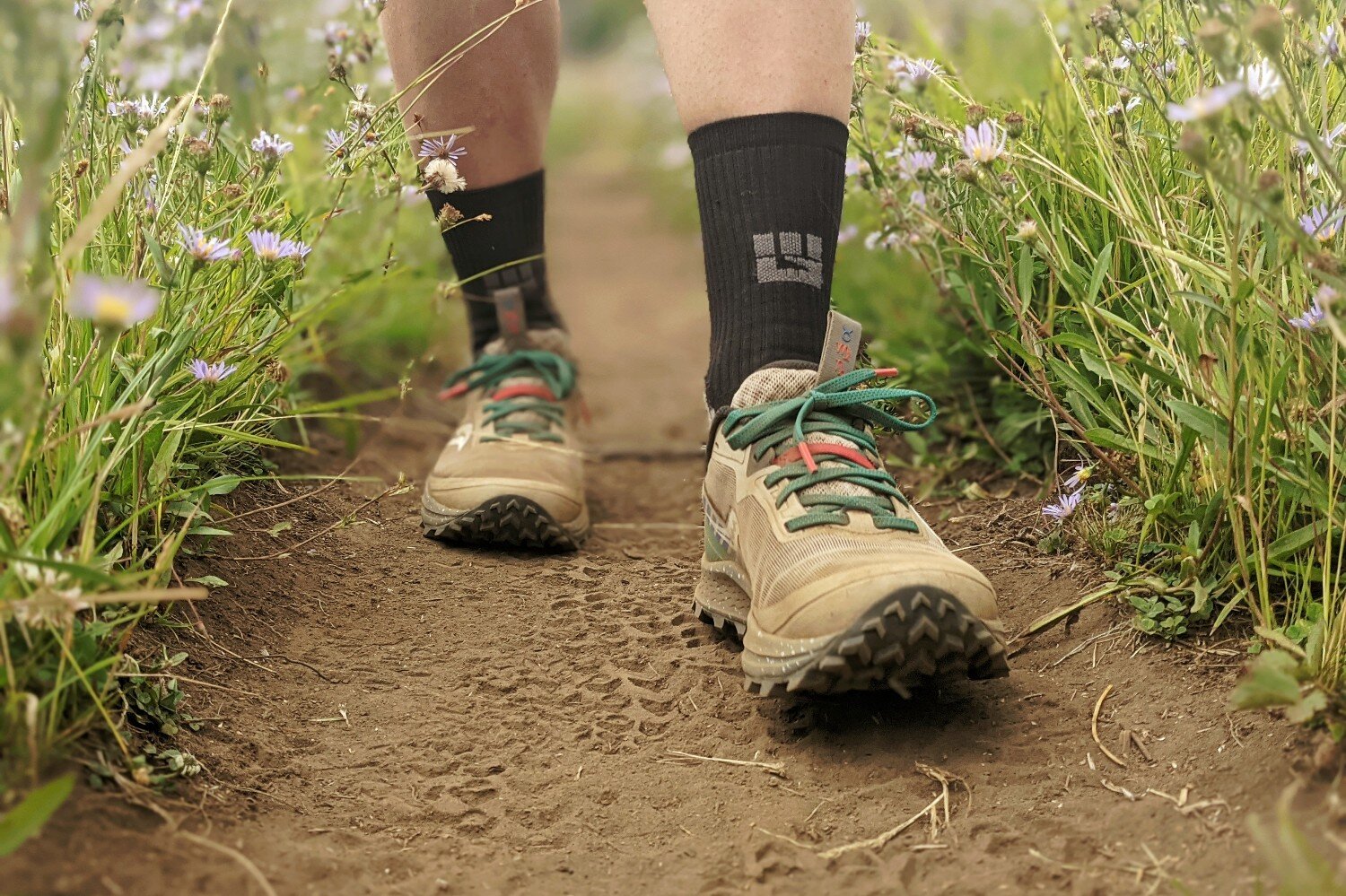
WHY TRUST CLEVERHIKER?
Gear Analyst and tester Heather Anderson has covered over 50,000 miles on foot over the last 24 years—running, mountaineering, backpacking, and scrambling. She was the first woman to complete the Triple Crown of Backpacking (the Appalachian, Pacific Crest, and Continental Divide Trails) three times, including a Calendar Year Triple Crown in 2018. Additionally, she has set multiple FKTs and summited 49 of the US State Highpoints. She has worn out hundreds of pairs of shoes in pursuit of visiting the best wild places. Her mileage through mud, rocks, scree, and sand gives her unique insight into the features and functionality that trail runners and hikers, including herself, often look for.
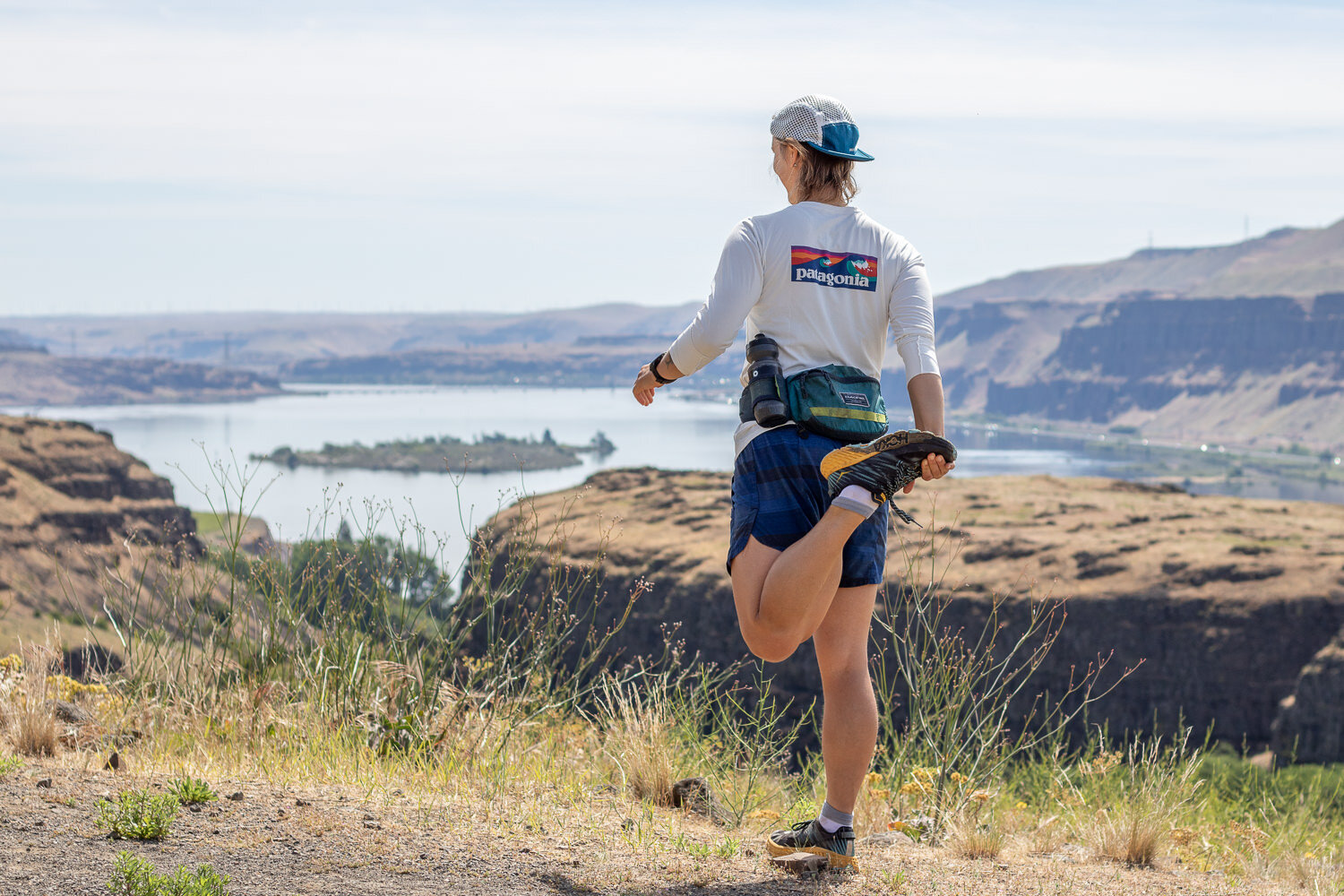
ANALYSIS & RESULTS
We rank shoes based on six metrics including traction, comfort, weight, durability, breathability, and responsiveness. Our comparative results below outline the top performers in each metric.
VALUE
Trail running shoes can be pricey, especially since—unlike a lot of outdoor gear—outdoor enthusiasts will often go through more than one pair a year. Coupled with that is versatility value—”What percentage of my running can be done in this one shoe?”
While price isn’t the sole factor in value selection, we found a strong correlation among the shoes we tested. Several of the less expensive pairs were also incredibly versatile and durable, whereas the priciest shoes we tested (the Nike Zegama 2 and the Brooks Catamount 4) were far less versatile.
The Brooks Cascadia 18 is a solidly built, versatile trail runner that tackles a wide variety of terrain and has impressive durability—all at a lower than average price point. These factors make it the best overall value for both longevity and versatility.
Coming in at a similar price point are the Saucony Peregrine 14 and Altra Lone Peak 8 as well as the slightly more expensive Nike Pegasus 5. Although each is either slightly less versatile or a tad less durable than the Cascadia, together, these pairs round out our value section with shoes that will provide a lot of miles for the money.
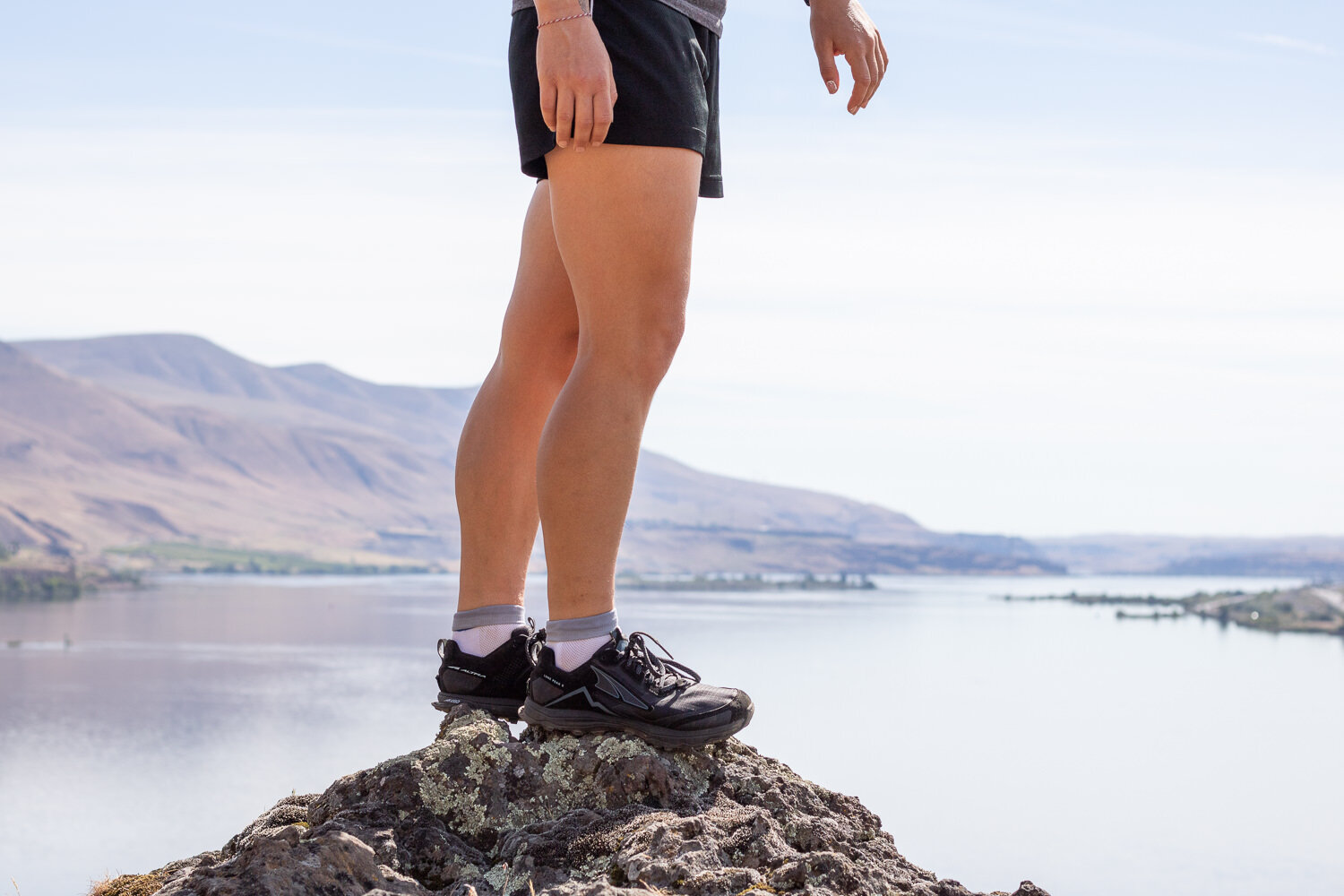
TRACTION
How well the shoe interfaces with the trail surface is a crucial aspect of choosing a proper trail running shoe. At a minimum, there should be adequate lugs to provide purchase on natural surfaces and enough outsole grip to stick to the surface. Testing traction meant we took each model for a spin on several terrain types. These included soft singletrack, compact trails, gravel paths, wet rocks and/or plank bridges, and muddy grades. We made note of how in control we felt and whether or not our grip felt secure.
Our top performers in this category are the well-built Brooks Cascadia 18 which has deep lugs and a grippy outsole, as well as the supremely rugged La Sportiva Bushido III. Both of these shoes dug into loose soil and mud to provide stability even on steep grades, and they clung to slippery surfaces like wet rocks to give us confidence when we needed it most.
The Hoka Speedgoat 6, while a tad less grippy on wet surfaces, provided a great deal of traction with its impressive lugs. It performed well in deep sand, mud, and more compacted trails. Impressively, it handled sandy terrain like a champ, maintaining flotation without losing a lot of hard earned momentum.
COMFORT
Comfort is a far more subjective category and is really about finding the shoe that best complements your foot shape. Our testers checked out wide widths as well as standard lasts and paid attention to any potential pinch points or issues with chafing. Even though comfort perception and foot shape vary widely among runners, several stand-outs in our testing line-up have materials and construction that provide a comfortable ride for a broad cross-section of trail users.
Topping that list are the Saucony Peregrine 14 and Brooks Cascadia 18—our two best performing overall shoes. Both have a forgiving mesh upper that isn’t restrictive and are available in wide widths. They offer moderate cushion without completely canceling ground feel, giving the wearer a sense of connectedness to the trail without excessive pounding.The Nike Pegasus Trail 5 and New Balance Fresh Foam Hierro X 8 both provide comfortable fits with room for toe splay. These more maximally cushioned shoes provide ample padding for those who want a bit more plush options. All of these shoes performed well without causing any significant pain points.
WEIGHT
Among top performing trail shoes, there isn’t usually a huge variance in weight across models. However, there are a few shoes that were noticeably less hefty than the others. Choosing one of these models can make a huge difference for mile-hungry runners and long-distance trekkers who are lifting their feet a thousand times or more per session.
The lightest options we tested were the Hoka Speedgoat 6 and Brooks Catamount 4 which each weigh in at just a smidge over a pound per pair. The Speedgoat is a burly all around trail shoe and the Catamount is built for real speedsters.If neither of those is right for you and weight is a high priority, check out the Saucony Peregrine 14 or Nike Pegasus Trail 5, which round out the lightest of the list at just an ounce over a pound per pair. Both of these options provide plenty of performance without a lot of bulk.
DURABILITY
Along with versatility, durability is a huge component of selecting the best trail running shoe. No kicks last forever—most runners will get less than 500 miles out of a pair—but choosing ones that will hold up for a good amount of miles without compromising foot support or protection is key.
The Topo Terraventure 4 Waterproof tops our list for upper durability. This rugged shoe is made to last and our testers had a difficult time truly wearing them out. While you’ll be able to log a lot of miles in the Terraventure 4 WP keep in mind that the waterproofing may begin to degrade after extended use, especially if exposed to a lot of abrasion and/or snags. Of our non-waterproof models, the Hoka Speedgoat 6 and the Brooks Cascadia 18 rank at the top. Both are built to last, with reinforcement panels adding to the longevity of the uppers and rugged outsoles that protect the inner structure of the shoe from damage. Even after triple digit miles these shoes show little signs of wear and tear.
BREATHABILITY
Having adequate airflow in a shoe can make the difference between comfy feet and blister heaven. Most trail shoes incorporate some form of mesh or breathable panels into their uppers to help keep things cool. We found the Saucony Peregrine 14 to top the list—keeping our feet fresh even when wearing black shoes on hot days. They also dried fast when wet.
We also found the Nike Pegasus Trail 5 and La Sportiva Bushido III to be incredibly breathable with optimally located perforations in the former and air mesh side panels in the latter. Both offered superior moisture management even during intense runs.For those looking for a lot more cushion underfoot, we found the New Balance Fresh Foam XTrail More V 3 to breathe the best out of our plush models. With a spacious mesh upper we never felt heat or moisture build-up.
RESPONSIVENESS
How well a shoe returns energy back to you for propulsion is a major factor of responsiveness. We also include the agility of the shoe in technical terrain and how well we can feel and respond to the ground itself. We took each model on flat and fast gravel paths as well as on technical trails with twists, turns, and uneven footing. We found the following shoes to be the best of the best in this category.
Once again the Saucony Peregrine 14 and Brooks Cascadia 18 top the list by combining moderate cushion for ground feel with good energy return on a wide range of terrain. These shoes handled compact trails and technical terrain with aplomb—keeping us bounding along no matter the terrain.
The Nike Pegasus Trail 5 and New Balance Fresh Foam Hierro X 8 strike the best balance between providing maximum cushioning without sacrificing ground feel or agility in tight spaces. Those seeking that maximum cushioned feel but still wanting to feel nimble on roots and rocks will find it here.
Designed for speed, the Brooks Catamount 4 offered maximum energy return, but deadened ground feel more than we liked. However, it remained nimble on twisty trails making it great for high-speed, obstacle-free running. Its responsiveness was more variable, providing better return on energy at faster speeds and less when we slowed down, making it more of an investment-based response than an across the board performer.
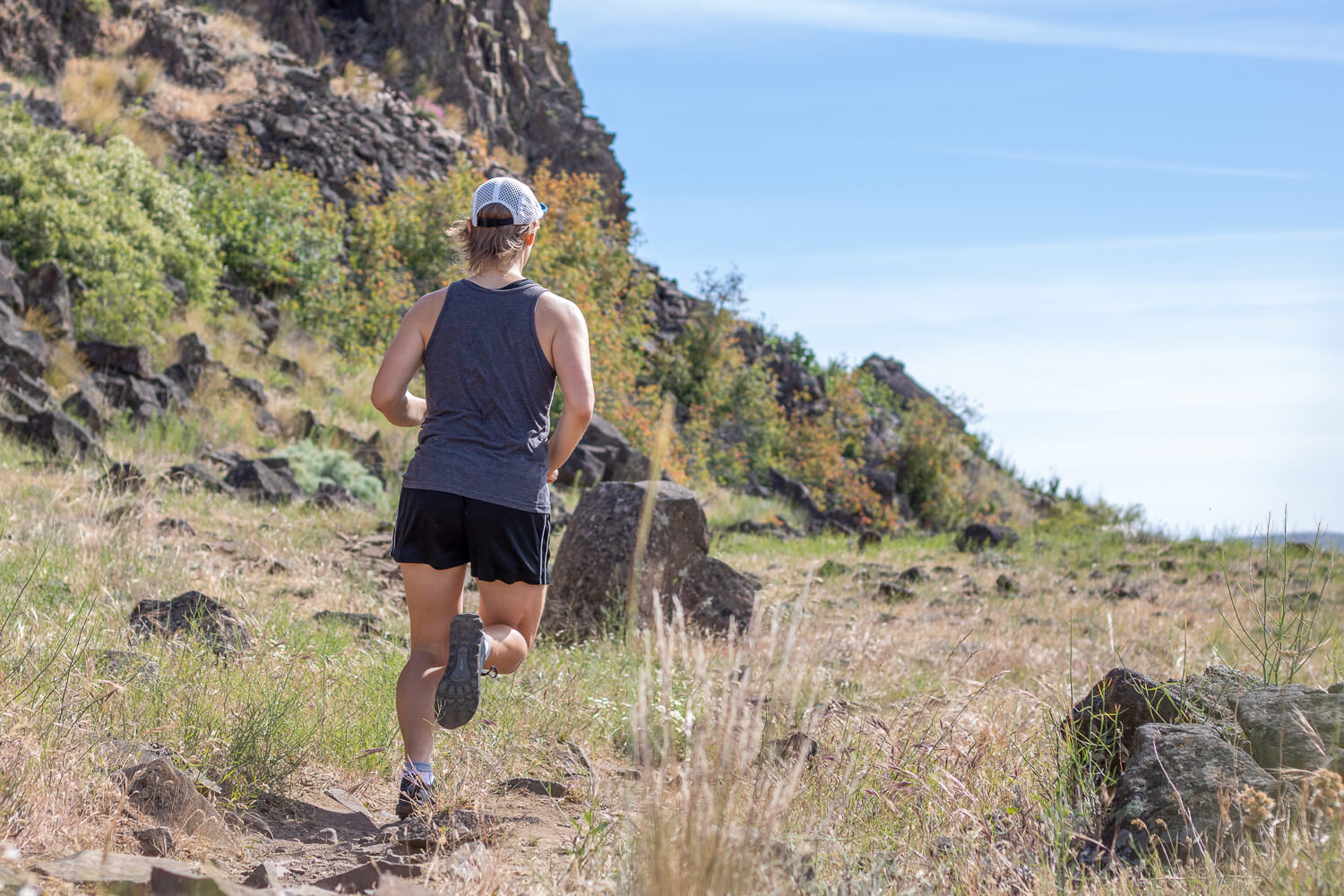
How to Choose Trail Running Shoes
FIT
The primary factor in choosing any footwear is how it fits your foot. Trail shoes are no different; finding a comfortable shoe is key to keeping your feet happy during activity.
Fit includes basic things like choosing the right size and width, but also includes more nuanced factors like allowing space for foot swell on long runs or hot conditions. Athletic shoes will often need to be a larger size than your street shoes for those reasons.
Trying on a shoe with your normal running socks and taking them for a short jog can help identify most fit issues, however, some will only show up after prolonged use. That’s where reading longitudinal reviews can really help.
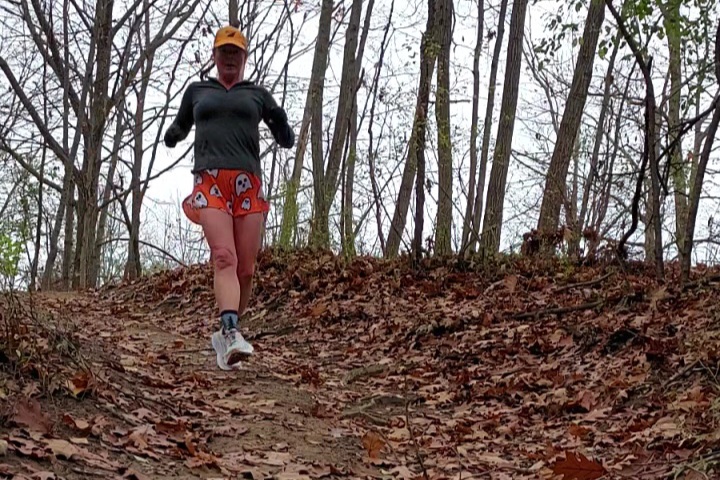
CUSHION
Hand in hand with fit is cushion, which largely comes down to personal preference. Some people prefer more cushioning and others less. It’s a good idea to try various cushion levels and stack heights until you get a sense of what works for you. Those who run on more compact surfaces typically enjoy more padding, which brings us to the next criteria: Terrain Type.
TERRAIN TYPE
There are a vast array of trail types, and finding a shoe that is properly suited to your typical running terrain is important. Some trail shoes are meant for aggressive traction on steep mountain grades—those would be overkill if you typically run well-groomed compacted paths and vice versa. Identify where you plan to run and look for shoes built for that category. If you run on a wide variety of surfaces you may need to invest in more than one shoe, or look at versatile models that excel on the types of trail you run the most.
VERSATILITY
Unless you run the exact same type of trails all the time, or own several pairs of specialized shoes, choosing a trail runner with decent versatility can be of great value. Look for trail runners that can perform well on two or three terrain types—excelling on the one that you run the most. Keep in mind that most shoes will be optimal on one type of terrain and less-so on others. Ranking the percentage of time you spend on each type can help you narrow down your options.
Conclusion
There are a vast array of trail running shoes on the market and choosing the ones that are right for your foot can be a daunting task. However, taking the time to find the perfect fit can make a huge difference in your enjoyment and performance on trail. Whether you’re looking for plush cushioning to optimize comfort, high performance for race day, or maximum versatility for a daily trainer, we hope our guide helps you find your ideal trail shoe. Happy running!
